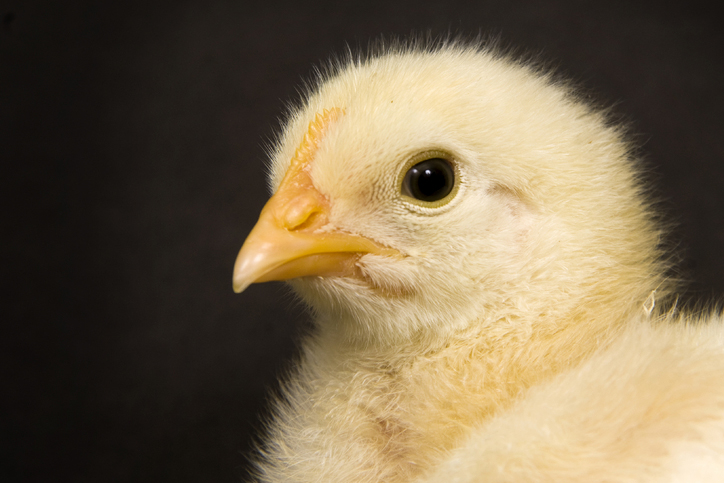Poultry production without antibiotics

In a quest to reduce antibiotics in poultry production, feed additives are seen as part of the solution. A feed additive was tested in Europe and the US for its health and growth effects, compared to a traditional antibiotic product.
Antimicrobial-resistant bacteria are a major threat to public health and therefore, the use of antibiotics in livestock should be kept to a minimum and only used for treating sick animals. For a successful reduction, all aspects of animal husbandry should be considered in a holistic approach, to increase the chance of success and economic feasibility. This entails among others to use enzymes to get the best out of all-vegetable based diets and to reduce the negative impact of non-starch polysaccharides. But also quality of feed and drinking water, good housing conditions, reduced bird density, proper litter management and coccidiosis vaccination are all keys to productive and healthy birds. There is definitely variability in the way antibiotic free programmes are managed and in the success rate of those programmes. It is important to realise that every poultry operation is different and may require its own tailored approach.
Focus on intestinal health, Necrotic Enteritis and Bacterial Enteritis common
In a recent worldwide survey among poultry technicians, nutritionists, veterinarians and farm managers, it was concluded that both NE (Necrotic Enteritis) and BE (Bacterial Enteritis) are commonly experienced issues all over the world, with an important economic impact, significant from an early stage. Prevention is key and feed additives or drinking water products are accepted as useful and effective tools to contribute to problem avoiding, rather than problem solving. A trial in Europe was carried out with a feed additive* (trial feed additive), which combines slow release and protection technologies ensuring that acids, medium chain fatty acids, butyrate, essential oils, anti-inflammatory compounds and polyphenols are delivered in a gut active way for a powerful and effective antibacterial control, high quality tight junctions, neutralisation of the produced ROS and tempering of the inflammatory cytokine production. A total of 960 one-day male chicken broilers ROSS 308 were allocated into 4 groups (treatments). All chickens originated from one parent flock of the same age and were sexed at the hatchery. The control group (Control) was fed with commercial feed mixture without any feed additive (Table 1).
The trial groups (T2 – T4) were fed with chosen feed additives in defined doses according to the trial protocol. T1: Control + Polyphenol based additive. T2: Control + Single component SCFA and T3: Control + trial feed additive*. A three-phase feeding scheme (corn, wheat, soy based mash diet) was applied with a starting period of 14 days followed by a growing period from 15th to 28th day of age and a finishing period from 29th to 35th day of age. During the different phases, the additives were dosed at respectively 1000 g/MT, 500 g/MT and 250 g/MT of feed. Except for anticoccidiostats, the base diets were free of any ingredients containing antimicrobial activity.
Better growth parameters
During the whole trial period all trial groups demonstrated both higher intensity of growth and simultaneously a better feed conversion ratio. The highest average daily weight gain was observed with the trial feed additive as well as the best feed conversion (P<0.05). treatments 2 and 3 also showed a better daily weight gain but to a much lesser extent than in the case of the trial feed additive. mortality did not exceed normal levels. during phase 1 and 2, the trial feed additive outperformed the other additive supplemented groups both in terms of daily gain and in feed conversion, which indicates an excellent start-up and solid support during the period of bacterial enteritis development. overall, the trial feed additive improves technical animal performance in the well-controlled environment of a research station out of which a growth performance effect can be concluded.></0.05).>
Testing as AGP replacer
In a second trial with 350 male Cobb chicks at the Department of Animal Science of Oklahoma State University (USA), the trial feed additive was applied as replacement of the antibiotic growth promoter Tylosin. Coated butyrate, the trial feed additive and Tylosin all had a strong tendency to improve growth performance of broilers following three weeks of supplementation (Table 2). As there was no significant effect of none of the treatments on feed intake, FCR was significantly improved for these treatments compared to the control group. It should be observed that both, coated butyrate and the trial feed additive numerically outperformed the antibiotic growth promoter Tylosin. It is also worth mentioning that feed supplementation with 1 g/kg of unprotected Sodium Butyrate (group SB) showed a numerical, but statistically insignificant increase (P > 0.05) in the BW at the end of the second and third week, relative to the control group. However, because of a trend (P > 0.05) in reducing the feed intake, the birds fed unprotected butyrate showed a significant improvement (P < 0.05) in the FCR over the control group and were comparable to those of the other groups. However, sodium butyrate, if unprotected, showed an obvious but insignificant reduction in BW and ADG compared with the coated butyrate or trial feed additives group, both of which contain target released sodium butyrate, suggesting that butyrate micro-encapsulation or esterification enhances feed intake and growth performance of birds. Overall, it can be concluded that the coated butyrate and the trial feed additive can be used as effective alternatives to antibiotics.
* Lumance® ** Novyrate® C
Source: All About Feed magazine 24.4 (2016)











